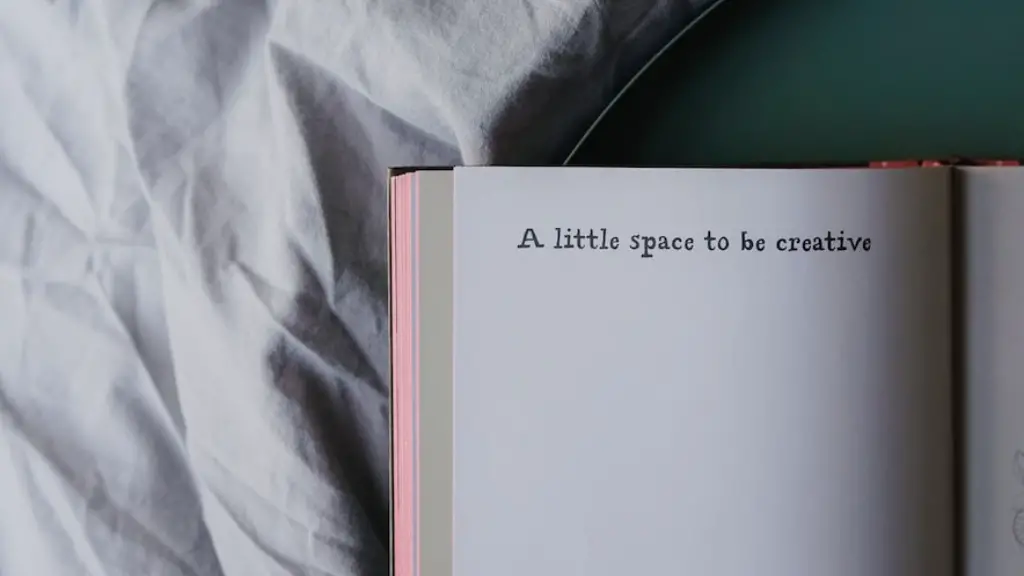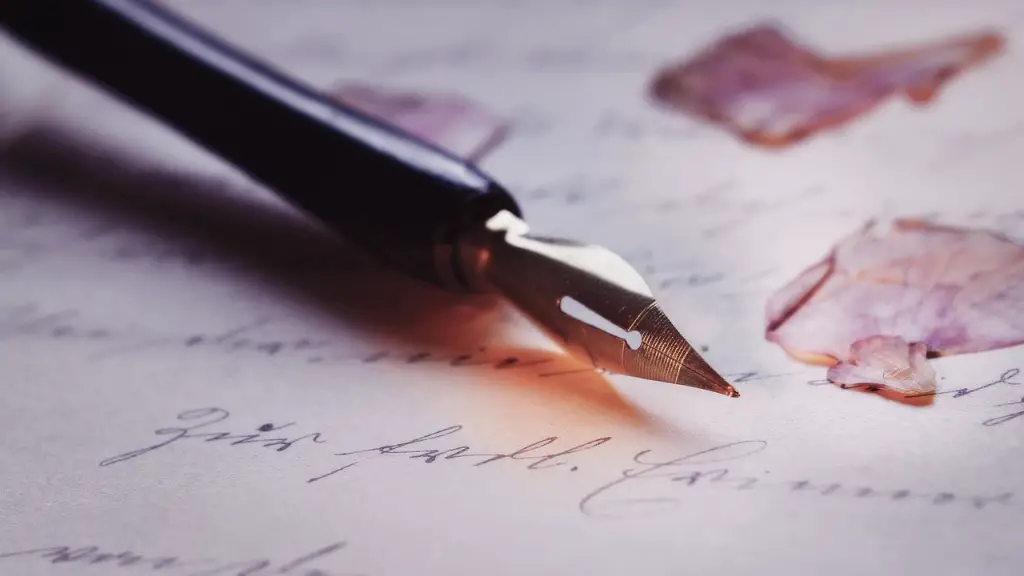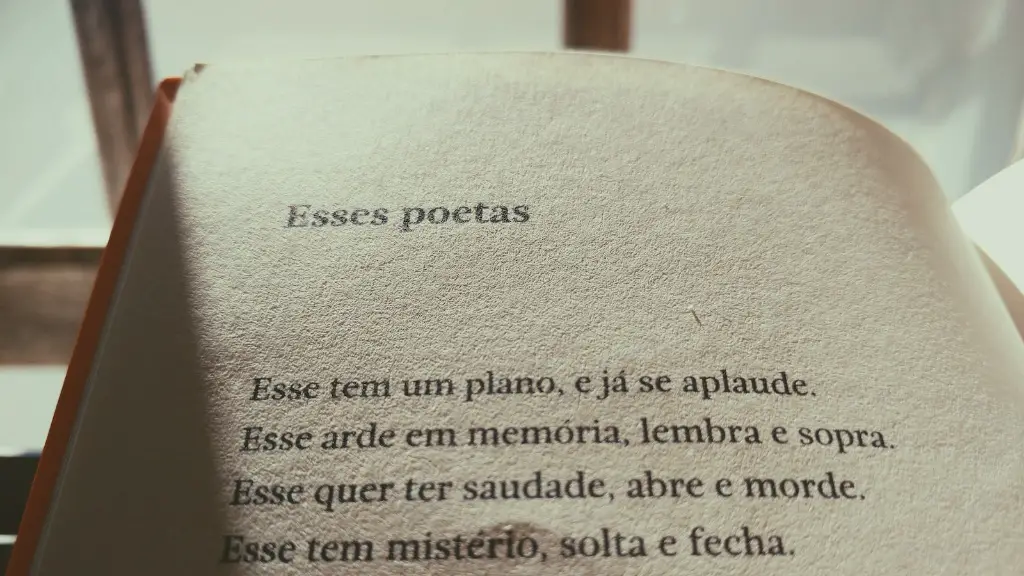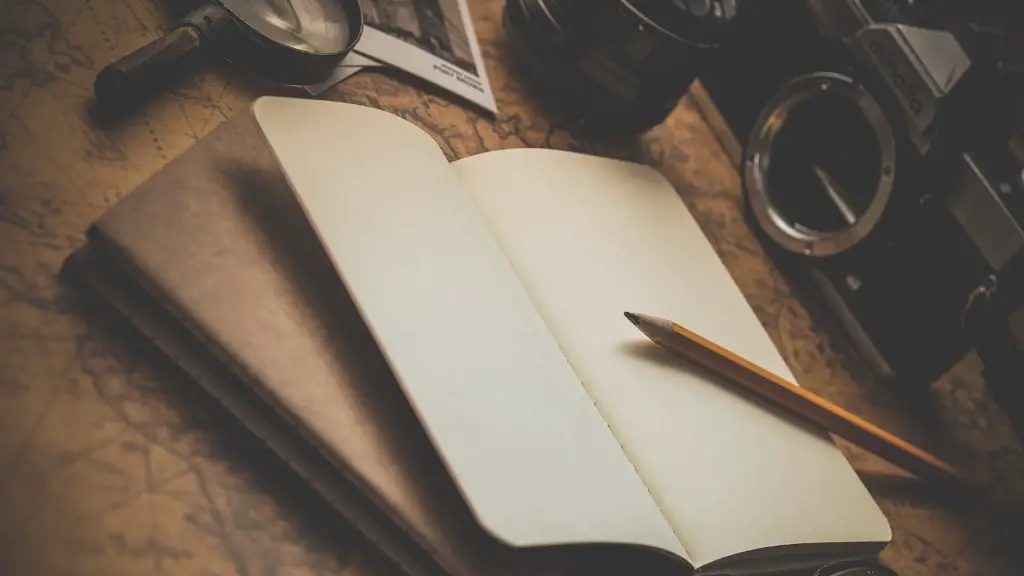History
Narrative poetry is an ancient form of storytelling that has been with us since the dawn of civilization. It is a type of poetry that tells a story, with characters, and a plot. It is found in literature, such as in Homer’s The Odyssey, and in oral traditions, such as Native American tribal stories. Throughout the ages, different cultures have developed their own unique techniques for writing narrative poetry.
Introducing Narrative Poetry
Narrative poetry is characterized by the use of words to tell a story. It includes dramatic descriptions, figurative language, and all the elements of storytelling. It often follows a specific form, but it can also be improvisational. The narrator can be a character within the poem, or an anonymous voice that is describing events from a distance. In contrast to other forms of poetry, such as haiku or sonnet, narrative poems are generally much longer and often include complex plots and storylines.
Techniques and Structures
When writing narrative poetry, writers should consider the structure of the poem, its tone, and the characters. They should also look at the use of literary devices, such as metaphor and personification, as well as poetic devices, such as rhyme and meter. Additionally, writers should consider their audience and the purpose of the poem, which will help them determine the best way to tell their story.
Educating the Reader
Many writers prefer to read about the intricacies of narrative poetry before attempting to write their own. It can be helpful to read works by other poets, both in and outside of the narrative form. Writers can learn about poetic techniques and structure by reading different types of narrative poems, such as ballads, epics, and folk tales. Writers should also pay attention to the way that other poets use language and structure to master the craft.
Preparing To Write a Poem
Once a writer has a better understanding of narrative poetry, they can begin the process of writing their own poem. They should begin by deciding on the theme of the poem and which characters will be featured. It is often helpful to write a narrative outline before beginning the poem in order to ensure that the narrative is well-structured. An outline will also help the writer stay on track and establish the roadmap for the poem.
Developing the Narrative
Once the outline is complete, the writer can begin to flesh out the poem. They should consider the structure of the poem, the language that they use, and the tone that they set. It is important to keep the story cohesive and have a clear beginning, middle, and end. Additionally, writers should not be afraid to explore different formats, such as dialogue or monologue, as well as different poetic devices.
Creating an Engaging Narrative Poem
When writing a narrative poem, it is important for the writer to include vivid descriptions and engaging language. They should take readers on a journey and introduce new characters, settings, and twists in the narrative. It is also important to write with emotion and incorporate figurative language, such as metaphor, simile, and imagery. This will help make the poem more impactful and memorable.
Editing and Revising
Once the poem is complete, it is important to read it over multiple times in order to ensure that the narrative flows seamlessly. Writers should take the time to revise and edit their poems, looking for any redundancies, clichés, or inconsistencies in the language or plot. Additionally, they should trust the revision process and not be afraid to make changes, even if it means having to start the poem from the beginning.
Publication
When poets are happy with their narratives, they can then consider publishing their work. Publishable poems usually have a clear structure, engage the reader, and evoke emotion.~ Writers should also look for publications that allow them to showcase their work, such as online magazines or literary journals. Some publications even have specific calls for narrative poetry, so writers should keep an eye out for those.
Making Connections
One of the most important aspects of creating great narrative poetry is making connections. Writers should look for opportunities to make connections between events, characters, settings, and themes. This helps create a deeper level of engagement with the reader and gives the poem more depth. Additionally, writers should look for connections between their own experiences and those of other writers in order to make their poetry more relatable and powerful.
Rhythm and Meter
Rhythm and meter are essential elements of narrative poetry. They help to create a sense of flow in the poem and provide a beat that helps the reader move through the story. When writing narrative poetry, writers should consider different types of verse, such as iambic pentameter, as well as employing rhyme and repetition. They should also consider using pauses and stanzas to help create a natural rhythm for the poem.
Creating New Narratives
When creating narrative poetry, writers should take inspiration from their own lives or the lives of others. They can also look to other authors for ideas and look for creative ways to shape their stories. Additionally, writers should be open to exploring different formats and structures as they develop their narratives. This can help create unique and powerful poems that stand out from the crowd.
Exploring Multiple Genres
Narrative poetry is not limited to just one genre. Writers should feel free to explore different genres and incorporate elements of multiple genres into their work. They should also consider writing in other forms, such as fiction or non-fiction. This can lead to a more interesting narrative and help create a unique and engaging poem.
Making the Most of Performance
Many narrative poets choose to perform their work, either through readings or online. This allows them to connect with their audience in a more personal way and create an engaging experience. When performing, writers should be mindful of how they use their voice and body language to add to the story. They should also consider how to utilize props and visuals to bring the poem to life.



